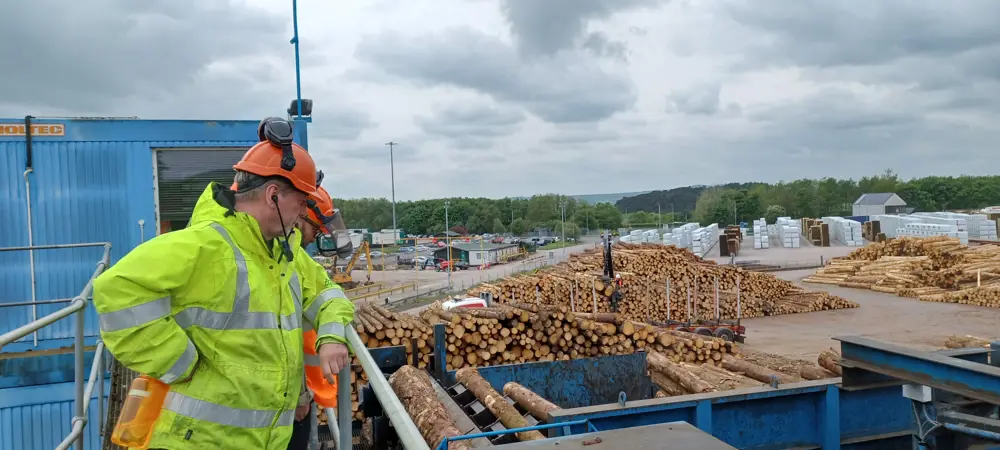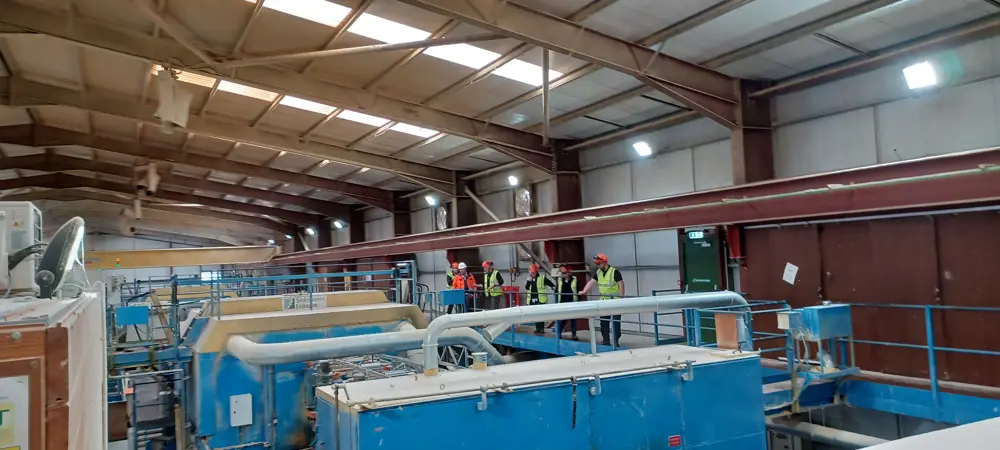Visit to Lockerbie sawmill

Our staff recently toured the James Jones sawmill in Lockerbie, where large volumes of our timber are processed for construction and other markets. The tour was part of the Marketing and Sales Quality Assurance workshop in our South Region.
Seeing what happens to our timber once it leaves the forest is rare for our staff and as the group were taken around the sawmill by James Jones General Manager Rob Mackenna, it became apparent how much investment, energy, innovation and timber supply is required to sustain a sawmill competing at local, national and international levels to supply quality timber products.
The sawmill covers a vast area and is dominated by activity, 110 timber lorries a day, yard loaders in constant motion and an array of large machines moving and processing thousands of tonnes of timber a week.
Yet within this highly industrialised environment, wildlife is also present, a hare, birds nesting close to machine sheds and a wetland management scheme running through part of the plant.
The visit to James Jones highlighted the value of our timber.
Importantly there is the income generated for us but on a wider scale, it allows our customers to invest in technology, add value to products, maintain and develop a workforce and lock carbon in sawn timber. Added together these factors strengthen our economy, help counter climate change and support society.

The timber industry in Scotland
Forestry and timber processing accounts for £771 million of Gross Value Added (GVA) in Scotland every year. It also provides more than 30,000 jobs across the wood production, forest management, haulage and processing sectors. Jobs like those in sawmills like James Jones.
Each year we produce around 3.2 million cubic metres of timber. Most of this is grown for construction, fencing and paper production, or as pallets, woodchip and woodfuel. A small proportion of our timber, on account of its size or species, falls into that we term specialist timber where customers look to character, provenance and scale to meet often very unique client orders.
We sell our timber in two ways, standing sales where the timber is sold as trees and the buyer is responsible for removing them. We also harvest trees ourselves and sell them to sawmills such as this.
When you shop, look out for the FSC and PEFC logos, this ensures your timber is sustainably grown and harvested to the highest UK standard.